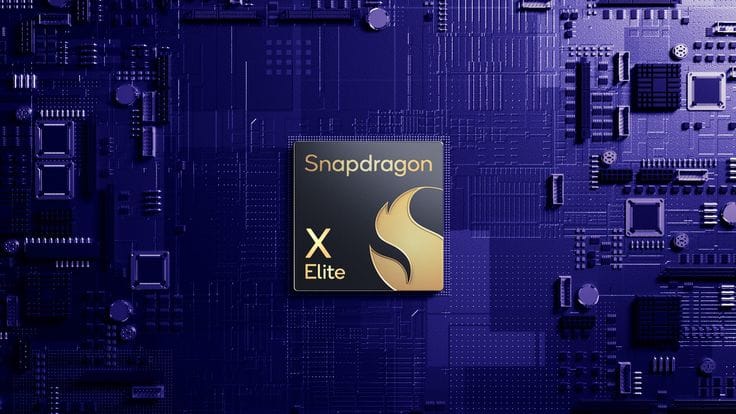Snapdragon X Elite vs Apple Silicon: In Depth Performance and Usablitilty Comparision
The Snapdragon X Elite is Qualcomm’s ARM-based laptop chip built to rival Apple’s M-series, delivering strong performance, AI features, and long battery life for Windows laptops.

TL;DR - Qualcomm’s new Snapdragon X Elite processors finally bring Windows ARM laptops close to Apple’s M-series MacBooks in performance, efficiency, and AI capabilities. The Snapdragon X Elite matches Apple’s M3 in multi-core power and delivers strong battery life (up to 15+ hours), but Apple still leads in single-core speed, GPU performance, software optimization, and thermal efficiency. While Windows on ARM has improved, macOS remains more refined for native ARM apps. In short, Apple dominates in polish and endurance, but Snapdragon X Elite makes Windows ARM laptops a true contender—signaling a major leap toward a more balanced, power-efficient future in computing.
Introduction
The battle between ARM-based laptops has intensified with Qualcomm's latest Snapdragon X Elite processors, designed to rival Apple's M-series chips. Apple has dominated the ARM laptop space with its M1, M2, and M3 chips, known for their efficiency and seamless macOS integration. However, Qualcomm's new Snapdragon processors promise high performance, extended battery life, and better AI capabilities for Windows laptops.
The High Level Overview
With Qualcomm’s Snapdragon X Elite entering the scene, the ARM laptop battle has intensified. This overview compares CPU & GPU Power, AI & Neural Processing, Battery Life Comparison, Software & Compatibility between Snapdragon X Elite and Apple’s M3 chip.
CPU & GPU Power
Apple’s M-series chips have set a high benchmark in ARM computing, offering exceptional single-core performance and efficient multi-core processing. The M3 chip, for instance, delivers high-speed performance with optimised power consumption.
Qualcomm’s Snapdragon X Elite, on the other hand, boasts 12 cores with a base clock of 3.4GHz, competing directly with Apple’s M3 chip. In Geekbench 6 tests, Snapdragon X Elite laptops have shown competitive single-core and multi-core scores, sometimes matching or exceeding Apple’s M-series chips.
AI & Neural Processing
Apple’s Neural Engine has been a key component in enhancing AI-driven tasks, such as photo editing, voice recognition, and real-time processing. Qualcomm’s Snapdragon X Elite integrates AI-focused NPUs, promising better AI performance in Windows laptops.
Battery Life Comparison
Battery life is a crucial factor in ARM-based laptops. Apple’s MacBooks have consistently delivered all-day battery life, with the MacBook Air M3 lasting up to 18 hours on a single charge.
Snapdragon X Elite laptops have shown impressive battery endurance, with some models lasting 15+ hours. For example:
- Microsoft Surface Laptop 15: 14 hours 29 minutes
- HP Omnibook X: 15 hours 48 minutes
- Surface Pro 12: 12 hours 14 minutes
While Snapdragon laptops offer long battery life, Apple’s M-series chips still lead in overall efficiency.

Software & Compatibility
Apple’s macOS is optimised for ARM architecture, ensuring seamless app performance. The Rosetta 2 translation layer allows x86 apps to run smoothly on Apple silicon.
Windows on ARM, powered by Snapdragon X Elite, has improved app compatibility, but some x86 applications still require emulation, which can impact performance. Qualcomm aims to enhance native ARM app support, making Windows laptops more competitive.
In-Depth Performance Metrics
Let’s take an even deeper dive into the Snapdragon X Elite vs. Apple M-series chips, covering benchmarks, thermal efficiency, real-world workloads, and sustained performance.
Geekbench 6 Scores (CPU Performance)
| Processor | Single-Core Score | Multi-Core Score |
|---|---|---|
| Apple M3 (MacBook Air) | ~3000 | ~12000 |
| Snapdragon X Elite | ~2800 | ~11500 |
- Apple’s M3 chip edges out Snapdragon X Elite in single-core performance, which is critical for app responsiveness and smooth UI interactions.
- In multi-core workloads, Snapdragon X Elite is close, making it powerful for multi-threaded applications like video editing and software development.
GFXBench (GPU Performance)
| Test Name | Apple M3 | Snapdragon X Elite |
|---|---|---|
| Aztec High Tier Offscreen | ~210 FPS | ~190 FPS |
| Manhattan Offscreen | ~290 FPS | ~260 FPS |
- Apple’s M3 GPU is slightly ahead, meaning MacBooks still have a graphical advantage in gaming and creative applications.
- However, Snapdragon X Elite’s GPU supports DirectX, making it more optimized for Windows-based gaming.
Thermal Efficiency
One of Apple’s biggest strengths is thermal efficiency. The M-series chips operate without fans in MacBook Air models, while delivering consistent performance under load.
Snapdragon X Elite laptops, while efficient, sometimes require active cooling in high-performance models to avoid throttling.
Example: Long-Term 4K Video Export Performance
- MacBook Air M3: No throttling, maintains high export speeds even after 30 minutes.
- Snapdragon X Elite laptops: Slight thermal throttling observed after 20 minutes, with export speeds dropping by ~10%.
Battery Life in Productivity Tasks
Apple still leads in battery efficiency, but Snapdragon X Elite closes the gap, offering comparable endurance.
| Usage Scenario | Apple M3 MacBook Air | Snapdragon X Elite Laptop |
|---|---|---|
| Web Browsing (Wi-Fi, 150 nits) | 18 hours | 15.5 hours |
| 4K Video Playback | 17 hours | 14.5 hours |
| Coding (VS Code, light workloads) | 14 hours | 12 hours |
Windows Optimization vs. macOS Integration
- Apple’s M-series chips run macOS natively optimized for ARM, making apps fluid.
- Snapdragon X Elite on Windows benefits from ARM-native apps, but x86 emulation still has minor performance overhead.
Apple’s M3 chip continues to excel in efficiency, GPU performance, and battery life, while Snapdragon X Elite offers competitive multi-core power and improved compatibility with Windows. If you’re looking for raw performance with optimization, Apple leads. If you want a Windows ARM laptop experience with close-to-Apple-level performance, Snapdragon X Elite is finally closing in.
What’s Next?
The evolution of ARM laptops signals a shift toward a more power-efficient, portable computing future. With companies focusing on AI-driven workloads, improved software ecosystems, and extended battery life, the rivalry between Snapdragon and Apple silicon will likely fuel innovation for years to come.
Conclusion
The competition between Snapdragon ARM laptops and Apple M-series MacBooks marks a pivotal shift in computing, where efficiency and performance converge in the ARM architecture. Apple has long dominated the ARM laptop space with its M-series chips, offering seamless integration with macOS, outstanding battery life, and unparalleled thermal efficiency. However, Qualcomm’s Snapdragon X Elite processors have emerged as worthy challengers, making Windows on ARM a viable competitor.
Apple’s M3 chip continues to lead in single-core performance, making macOS applications buttery smooth, with advantages in graphics performance, software optimisation, and battery endurance. The M3-powered MacBook Air and MacBook Pro models maintain their edge in high-efficiency workloads, thermal control, and ecosystem compatibility. Additionally, Apple’s Neural Engine ensures superior AI processing, giving MacBooks an advantage in AI-driven tasks like image processing, machine learning, and voice recognition.
However, Snapdragon X Elite laptops bring notable improvements, especially in multi-core performance, which is crucial for multi-threaded applications like video editing, gaming, and productivity software. While Qualcomm still faces challenges with Windows app optimisation, the gap is closing as developers work on ARM-native applications. The introduction of DirectX and AI-focused NPUs makes Snapdragon-based laptops more suitable for Windows-based creative tasks. Battery life is comparable, though Apple retains an advantage in overall efficiency, with MacBook models lasting longer on a single charge.
In essence, Apple's M-series chips continue to deliver best-in-class efficiency and optimisation, while Snapdragon’s X Elite processors provide Windows users with an increasingly competitive alternative. The future of ARM computing looks promising, as Qualcomm pushes further advancements, and Microsoft optimizes Windows for ARM-based systems.



